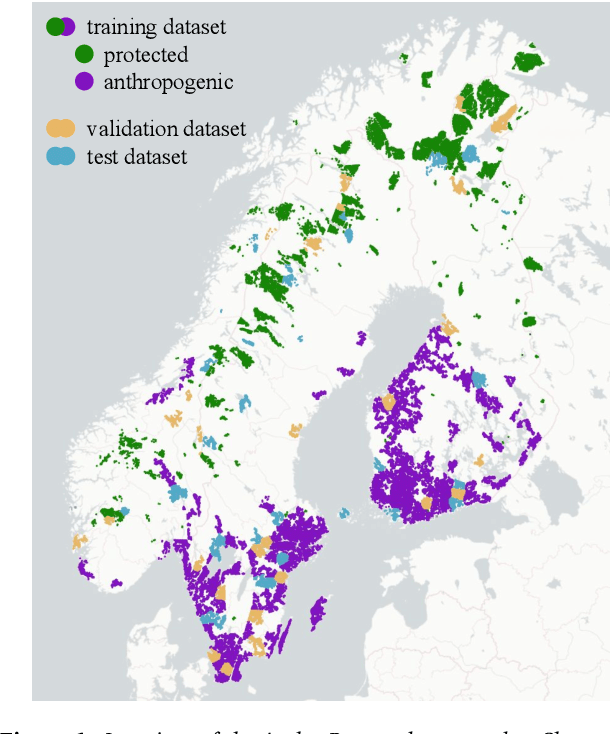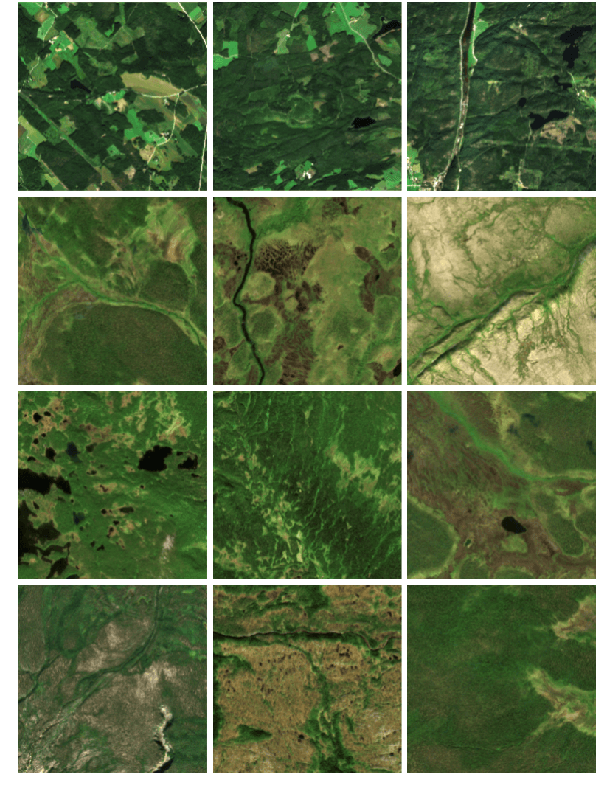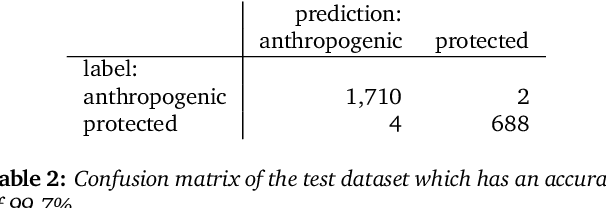Timo T. Stomberg
Leveraging Activation Maximization and Generative Adversarial Training to Recognize and Explain Patterns in Natural Areas in Satellite Imagery
Nov 15, 2023



Abstract:Natural protected areas are vital for biodiversity, climate change mitigation, and supporting ecological processes. Despite their significance, comprehensive mapping is hindered by a lack of understanding of their characteristics and a missing land cover class definition. This paper aims to advance the explanation of the designating patterns forming protected and wild areas. To this end, we propose a novel framework that uses activation maximization and a generative adversarial model. With this, we aim to generate satellite images that, in combination with domain knowledge, are capable of offering complete and valid explanations for the spatial and spectral patterns that define the natural authenticity of these regions. Our proposed framework produces more precise attribution maps pinpointing the designating patterns forming the natural authenticity of protected areas. Our approach fosters our understanding of the ecological integrity of the protected natural areas and may contribute to future monitoring and preservation efforts.
MapInWild: A Remote Sensing Dataset to Address the Question What Makes Nature Wild
Dec 05, 2022



Abstract:Antrophonegic pressure (i.e. human influence) on the environment is one of the largest causes of the loss of biological diversity. Wilderness areas, in contrast, are home to undisturbed ecological processes. However, there is no biophysical definition of the term wilderness. Instead, wilderness is more of a philosophical or cultural concept and thus cannot be easily delineated or categorized in a technical manner. With this paper, (i) we introduce the task of wilderness mapping by means of machine learning applied to satellite imagery (ii) and publish MapInWild, a large-scale benchmark dataset curated for that task. MapInWild is a multi-modal dataset and comprises various geodata acquired and formed from a diverse set of Earth observation sensors. The dataset consists of 8144 images with a shape of 1920 x 1920 pixels and is approximately 350 GB in size. The images are weakly annotated with three classes derived from the World Database of Protected Areas - Strict Nature Reserves, Wilderness Areas, and National Parks. With the dataset, which shall serve as a testbed for developments in fields such as explainable machine learning and environmental remote sensing, we hope to contribute to a deepening of our understanding of the question "What makes nature wild?".
Exploring Wilderness Using Explainable Machine Learning in Satellite Imagery
Apr 11, 2022



Abstract:Wilderness areas offer important ecological and social benefits and therefore warrant monitoring and preservation. Yet, the characteristics of wilderness are little known, making the detection and monitoring of wilderness areas via remote sensing techniques a challenging task. We explore the appearance and characteristics of the vague concept of wilderness via multispectral satellite imagery. For this, we apply a novel explainable machine learning technique to a dataset consisting of wild and anthropogenic areas in Fennoscandia. With our technique, we predict continuous, detailed, and high-resolution sensitivity maps of unseen remote sensing data for wild and anthropogenic characteristics. Our neural network provides an interpretable activation space in which regions are semantically arranged regarding these characteristics and certain land cover classes. Interpretability increases confidence in the method and allows for new explanations of the investigated concept. Our model advances explainable machine learning for remote sensing, offers opportunities for comprehensive analyses of existing wilderness, and has practical relevance for conservation efforts.
 Add to Chrome
Add to Chrome Add to Firefox
Add to Firefox Add to Edge
Add to Edge